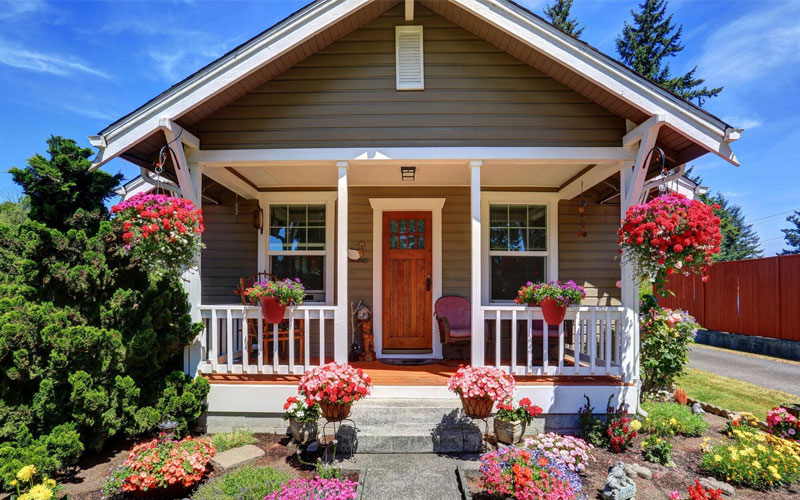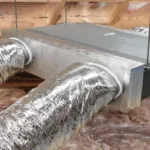Have you ever wondered about the differences between selling a big, luxurious, modern home versus a smaller, more contemporary one?
You’re not alone. As the housing market continues to evolve, it’s important to understand the nuances of listing and selling homes of various sizes and styles. Whether you’re a homeowner looking to list your property or a real estate agent seeking valuable insights, this blog post has got you covered.
Prepare to dive deep and gain valuable knowledge that can make all the difference in selling small modern homes. Let’s explore the fascinating and ever-changing landscape of the real estate market together.
Examining the Factors that Affect Home Sales
Selling a home, whether big or small, can be a daunting task. Yet, when it comes to modern homes, important factors must be considered to determine the best-selling strategy. These include:
Location
The location of a property can influence its desirability and appeal to potential buyers. A large modern home in a prime location with easy access to amenities, good schools, and a safe neighborhood would likely have a higher market value compared to a smaller home in a less desirable location.
The property location can also affect the target audience for the home. A big modern home may appeal more to families looking for extra space and a quiet neighborhood. A smaller modern home may attract young professionals looking for convenience and city living.
Size
Larger homes often offer more space and amenities. This makes them more desirable for families or those who enjoy hosting guests. On the other hand, smaller homes can be more affordable and need less upkeep.
This attracts first-time homebuyers or those looking to downsize. Knowing the difference in size between big and small modern homes is crucial in marketing and selling the property.
Age
The age of a home can impact its value and appeal to potential buyers. Older homes, although they may have charm and character, often need more maintenance and upgrades, which can deter buyers. On the other hand, newer homes with modern features and amenities can be more appealing to buyers.
It is true, especially for those looking for move-in-ready properties. Additionally, the age of the homeowner can also play a role in the decision to sell a big or small modern home. Empty nesters or retirees may be looking to downsize, while younger families may be seeking more space.
Layout
A well-designed layout can make a small home feel spacious and open, while a poorly planned one can make a big home feel cramped and impractical. In terms of selling a home, a favourable layout can increase its value and desirability.
For example, an open floor plan with flow between rooms can be appealing to modern buyers. Choppy layouts with narrow hallways and awkward room configurations may turn them away.
Upgrades
Upgrades refer to changes or improvements made to a home that can increase its value or appeal to potential buyers. In the case of selling a big or small modern home, upgrades can make a significant difference in the price and demand for the property.
For a big modern home, upgrades such as a renovated kitchen or bathroom can add luxury and attract high-end buyers. On the other hand, for a small modern home, upgrades that maximize the use of space, such as adding storage solutions or expanding rooms, can make it more appealing to buyers looking for functional living spaces.
Amenities
For bigger homes, amenities like swimming pools, home theatres, and multi-car garages may be expected. Meanwhile, smaller homes may focus on more practical features like energy efficiency and open floor plans. Sellers need to consider the amenities in their homes and cater to the needs of potential buyers to ensure a successful sale.
Competition
In the real estate market, competition drives prices and influences the demand for certain types of properties. When it comes to modern homes, there can be fierce competition among sellers, especially if similar properties are abundant in the market.
In this case, selling a big or small modern home can make a significant difference in attracting potential buyers and setting yourself apart from the competition. A big modern house may appeal to families looking for more space, while a small modern home may be more attractive to single individuals or couples.
Market Trends
These trends refer to the patterns and changes in the real estate market. It includes the supply and demand for different types of properties. As a seller, it is important to keep track of the current market trends.
This is to make informed decisions about pricing and marketing your home. For instance, if the market is favouring smaller homes due to a rise in demand from young couples or downsizing baby boomers, it may be wiser to sell a smaller modern home rather than a spacious one.
Target Audience
Knowing the preferences and needs of potential buyers is crucial in determining the most marketable option. For a larger, luxurious modern home, the target audience is likely to be upscale buyers who value spaciousness and high-end features. On the other hand, a smaller modern home may appeal to first-time homebuyers or those looking to downsize.
Pricing
A higher price for a bigger home may be justified by its larger size and added features. A smaller home may be priced lower to appeal to a wider range of buyers. Finding the perfect balance in pricing is key to selling modern homes.
The Pros of Selling Your Big or Small Modern Home
Selling a home can be a daunting and overwhelming process, but when it comes to deciding between a big and small modern home, there are pros to both options.
Lower Maintenance Costs
In comparison to older homes, modern homes are built with durable and low-maintenance materials. This reduces the need for constant repairs and upkeep. This can lead to significant cost savings in the long run for the homeowner.
Additionally, modern homes often come equipped with energy-efficient features such as the following:
- LED lighting
- high-quality insulation
This may result in lower utility bills. This not only benefits the new homeowner financially but also has a positive impact on the environment.
Intimate and Cozy Living Space
Many people long for a sense of warmth and connection within their home. With a smaller modern home, individuals can create a space that feels cozy and inviting. It promotes a sense of togetherness and intimacy among family members.
On the other hand, a larger modern home can still provide a cozy living space by utilizing furniture and homely decor. Regardless of the size, selling a modern home allows for a comfortable and intimate living space, making it a desirable option for many.
Potentially Downsize and Eliminate Excess Space and Possessions
Many people find themselves living in a larger home than they need, with rooms and storage spaces filled with items they rarely use. By selling their home, they can move into a smaller space that better fits their needs and lifestyle. This allows them to declutter and get rid of unnecessary belongings.
It will create a more organized and simplified living environment. Not only does downsizing save money on mortgage and maintenance costs, but it also promotes a more minimalistic and stress-free lifestyle.
The Challenges of Selling a Large Modern Property
Selling a large modern property can be a daunting task for any realtor or homeowner. This is because several challenges need to be addressed to sell the property.
Pricing the Property Correctly
With a large and luxurious property, it can be difficult to determine the right price as there is no set standard for comparison. Overpricing the property can lead to potential buyers being deterred, while underpricing can result in a loss of profit.
Additionally, with a changing real estate market, it is crucial to keep up with the latest market trends and adjust the price. Finding the Goldilocks price – not too high, not too low, but just right – is essential for a successful sale of a large modern property.
Maintaining the Property’s Appearance
With a larger space comes more maintenance and upkeep, which can become overwhelming. From the exterior to the interior, every inch of the property must be maintained. This is to preserve its modern aesthetic. This includes the following:
- cleaning the windows
- mowing the lawn
- updating the interior design
The challenge lies in finding the time, resources, and budget to maintain the property’s appearance. Yet, it is crucial to do so, as it can impact the value and appeal of the property to potential buyers.
Marketing the Property Effectively
Effective marketing is crucial in showcasing the unique features and selling points of the property. This requires a strong understanding of the target market and utilizing various marketing strategies such as:
- professional photography
- virtual tours
- social media campaigns
It also involves highlighting the property’s modern amenities and highlighting its potential for luxury living.
Dealing With Potential Buyers
Buyers are more informed and have higher expectations when it comes to purchasing a property. This means that sellers must not only present their property in the best light but also be prepared to answer any questions and address any concerns that potential buyers may have.
Furthermore, large modern properties often come with a higher price tag, making it imperative for sellers to negotiate and communicate the value of their property to potential buyers.
Scheduling and Managing Open Houses
With larger properties, there are often more rooms and features to showcase, making it a time-consuming task to plan an open house. Additionally, coordinating with potential buyers and their schedules can be difficult, especially if the property is in high demand.
It is crucial to schedule and manage open houses to ensure that they are well-organized and impactful, as these events can influence a buyer’s decision. This task requires strategic planning and efficient communication with both the seller and potential buyers, making it a challenging yet crucial aspect of selling a large modern property.
Negotiating With Potential Buyers
This can be a complicated process as different buyers may have different expectations and demands. Negotiating with potential buyers can be time-consuming and emotionally draining, as sellers invest a lot of time and effort in marketing their property and may feel attached to it. It requires strong communication skills, patience, and a deep understanding of the market to negotiate with potential buyers and close the sale of a large modern property.
Navigating the Legal and Financial Aspects
Because of the significant value and size of the property, there are often complex legal agreements and financial considerations that need to be managed. This can include contracts, title transfers, taxes, mortgages, and other legal and financial documents that must be understood and executed.
It can be a daunting task for a seller to navigate all these aspects on their own, which is why it is important to work with experienced professionals such as real estate agents and lawyers to ensure a smooth and successful transaction. Failing to address any of these legal or financial matters can result in delays or even financial loss for the seller.
How to Maximize Profits When Selling a Small Modern Home
Selling a small modern home can be a challenging process, but there are ways to maximize profits and make the most out of your sale. One of the most effective ways is to sell your house as is. This means that you are selling the property in its current condition, without making any repairs or renovations. By doing this, you can save time and money, and focus on other ways to increase your profits.
Another way to maximize profits is by setting the right price. Research the market and set a competitive price that will attract potential buyers. Additionally, staging your home can make a big difference. Make sure to declutter and update any outdated features to appeal to buyers. Marketing your property and considering all offers can also help in maximizing profits.
Explore the Nuances of Selling Big vs Small Modern Homes
Whether you are selling big or small modern homes, there are distinct differences that you should consider. From market demand to pricing strategies, it is important to understand these variations to make the best decision for your unique property.
If you are ready to sell, contact a real estate professional today for personalized advice and a successful selling experience. Don’t hesitate to make the right choice for the future of your home.
Looking for more tips and advice? You’re in the right place! Make sure to bookmark our page and come back to check out more interesting articles.













